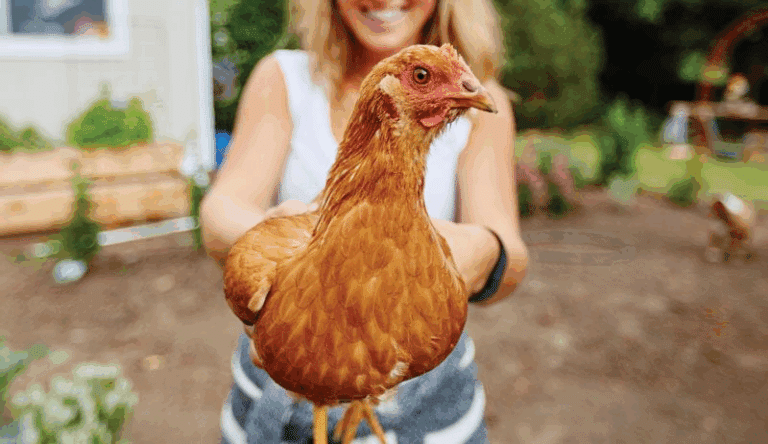Capture life’s moments and pass them on to the next generation.
Every single family holds precious stories. These narratives truly deserve to be remembered. They should pass down through the years.
A legacy journal is a shared space for this. It collects memories and vital life lessons. It records special, cherished family moments.
However, it is not always easy to create a legacy journal. This guide provides a simple roadmap now. We will show you how to create this journal.
The Value of a Legacy Journal
Memories fade quickly over time. Voices and details are easily forgotten. A written journal secures these stories. It becomes a permanent record of love. It allows future children to know their ancestors.
They can read about their challenges and joys. They inherit wisdom directly from the past. The journal prevents historical loss immediately. It celebrates the journey of your family. It is a tangible piece of your history. This record strengthens family self-worth. It tells everyone they are part of something great.
Step 1: Decide What Your Legacy Journal Will Capture

Start by discussing your goals together. Talk as a family about the content now. What kind of stories should you record? You can focus on childhood memories easily. You might concentrate on family traditions. Recipes and special holiday meals work well. Milestone celebrations are also great content.
Keep the journal’s focus flexible. The content can easily grow with time. You can always change your mind later on. Encourage everyone to contribute ideas now. Do not let one person decide everything. Collective input makes it truly shared.
Defining Your Scope
Deciding the scope prevents chaos. Will the journal be about one person? Or will it cover the entire family line? A wide scope requires clear organization. A narrow focus is simpler to manage first. Choose one theme to begin the writing.
Elements to Add
Make sure to capture core values now. Record your family’s unique traditions. Document stories of great resilience. Include the biggest challenges overcome. These elements provide real depth. They teach future generations strength. They are more vital than simple facts.
Making It a Collective Choice
Hold a simple family brainstorming session. Let everyone pitch their favorite story idea. Write all the ideas on a large board. Vote on the first three topics to start. This ensures everyone feels heard and involved. It makes the journal a team effort.
Step 2: Choose What Works Best
Let’s see your options. A handwritten notebook offers warmth. It has a personal, tangible touch immediately. Seeing actual handwriting is very special. It connects the reader to the writer well.
A digital format is highly flexible. Use Google Docs or a shared cloud storage. A simple shared app works well too. Digital files allow easy access and backup. They are safe from fire or water damage.
A hybrid option can be the best. Write pages by hand for the touch. Then scan them into a shared folder later. This gets the best of both worlds. Pick something truly simple now. Ensure everyone can join in easily.
Handwritten Journal Tips
Choose a high-quality, durable book now. Use archival-quality paper and pens. These materials resist fading for long life. Keep the book in a safe, designated spot. Make sure the handwriting is very clear. This is important for later reading.
Digital Format Benefits
Digital files are easy to share globally. Multiple people can edit simultaneously. You can include links to other content. Digital allows for simple, vast backups. Choose a platform that is easy to use now. The platform should be secure and stable.
The Power of Voice
Add audio or video journaling to your list. Use a simple voice memo app. Transcribe the audio for the written journal. This preserves the genuine tone and emotion.
Step 3: Make It a Family Activity
The journal must be an ongoing tradition. Set a regular “story time” now. This could be weekly or maybe monthly. Pick a time when everyone is around or free. Invite grandparents, parents, and kids now. Encourage everyone to share new stories. This makes the project highly inclusive. The little kids have stories too. Ask them about their favorite day.
Ask simple, open-ended questions always. This helps the stories flow naturally and easily. Keep the environment light and fun now. Do not let it feel like forced homework. The process must be pressure-free for all. It should be a cherished time together. Laughter is the very best sound.
Setting the Story Time Scene
Choose a comfortable place to gather. Offer simple, familiar snacks now. Set a good mood. Make the time feel very distinct. It should be separate from regular dinner talk.
Making The Conversation
Use prompts to guide the conversation. Write a story title on a small card. Pass the card around to everyone now. Each person adds a line or sentence. This creates a simple, collaborative tale. Keep the focus on listening respectfully. Do not interrupt the storytellers.
Encouraging All Ages
Give small children simple tasks now. Let them draw a picture of the story. Ask them to contribute one single word. Their involvement makes it truly complete. Teenagers may prefer to write alone. Respect their style and need for privacy. Every contribution has great value.
Step 4: Use Prompts to Spark Memories
Prompts are helpful for getting started. They make it easier to start writing now. They overcome the fear of a blank page. Use them for writing or for simple recording.
Gather a list of great starting questions now. Keep these prompts very engaging. Use questions like these for inspiration:
- “Who influenced your life the most and why?”
- “What did you learn from your first job ever?”
- “What is the funniest thing you can remember?”
- “What single piece of advice do you still follow?”
Encourage both short answers and long stories. Both styles work well in the journal. A one-sentence thought is perfectly fine. A long, detailed story is wonderful too. Mix the simple and the complex entries.
Organizing Your Prompts
Organize prompts by specific themes now. Use categories like “Childhood” or “Values.” This ensures a balanced, full journal. Keep a list of unused prompts ready. Draw one new prompt each week easily. This makes the project feel less random.
Using Object Prompts
Objects also make wonderful prompts. Place an old photo on the table. Show an old coin or a simple scarf now. Ask everyone to share a memory about it. Sensory prompts are highly effective. They unlock very specific details fast.
Writing Versus Recording
Let the person choose their format now. Some prefer to write their thoughts down. Others are better at simply speaking. Respect their preference fully and completely.
Step 5: Add Photos, Drawings, and Keepsakes

The journal is not just simple text. It must be visually rich and engaging. Include old family photos now. Add letters, postcards, or simple doodles. Encourage drawings from the little kids. Visuals make the journal much richer. They connect emotions to the written word.
Simple ticket stubs can hold great meaning. An old movie ticket sparks a memory. A yellowed newspaper clipping works well too. These small keepsakes add true texture. Every item tells a small story.
Integrating Visuals
In a physical book, use safe photo corners. Avoid glues and sticky tapes completely. They damage photos over time easily. In a digital file, simply scan the items. Place the visuals right near the related story. This ensures the context is always clear.
Captions Are Essential
Never include a photo without context. Add a clear, descriptive caption now. Identify all people and the date shown. Explain why the picture is important here. This information prevents future confusion. It helps the next generation understand.
Artistic Contributions
Encourage family members to get creative. Ask someone to illustrate a story. Let a teen design the chapter titles well. This broadens the journal’s appeal. It makes the content feel fully collaborative. The journal becomes a family art project.
Step 6: Keep the Journal Organized and Accessible
A large collection needs clear organization. Use sections or themes for easy navigation. This makes finding stories simple later. You can organize by timeline or by family branch. Organizing by theme is often most effective. Use categories like “Holidays” or “Family Traditions.”
Store all digital files safely and well. Use cloud storage with strong security now. Keep all your physical notebooks backed up. Scan the pages yearly for digital safety. The journal must be easily accessible now. It should not be locked away in a safe. The purpose is regular sharing and reading.
Indexing and Cross-Referencing
Create a simple index at the end now. List all the stories and their main themes. Note the names of the main storytellers too. This makes searching highly efficient. Cross-reference stories that are related closely. An organized journal is a usable journal.
Securing the Physical Book
Store the physical book safely now. Use a simple archival storage box. This protects the handwriting and pages. Treat the journal like a true heirloom now.
Accessibility for All
Ensure both digital and physical access. Print copies for family members who need them. Share the digital file with the rest easily. Use a common file type like a PDF now. Make sure the journal is easy to read.
Step 7: Review and Add New Memories Over Time
The legacy journal is a living collection. It is never a one-time finished project. Add new stories continuously over time. This keeps the archive fresh and relevant. Document stories during major family events. Add entries during holidays or milestone celebrations.
The Annual Review
Schedule a yearly review session now. Read some of the older stories aloud now. Laugh and reflect on the past year’s entries. This reinforces the project’s great value. It motivates everyone to contribute more now. The review is a powerful bonding moment.
Passing on the Tradition
Teach the next generation the entire process. Show them how to record and organize well. Give them ownership of the current book. This ensures the journal’s survival forever. A tradition lives when it is actively practiced.
A Modern Way to Preserve Your Family’s Legacy – StoryKeeper

Creating a legacy journal can be a lot of work. Organizing, editing, and binding can make you tired fast. You want the final product to look professional. StoryKeeper has got you covered.
StoryKeeper offers robust tools for this process. It helps families collect and organize stories easily. It provides simple prompts to begin writing. The platform organizes your recordings neatly. It then transforms your family stories beautifully. Your memories are turned into a lasting keepsake book.
Conclusion – One Journal, Many Generations!
A legacy journal is more than collected pages. It is a powerful, enduring gift to the future. It keeps beloved stories alive and well. It brings all family members closer together. It honors your entire shared history perfectly. This project is vital, meaningful work.
We encourage you to start now. Begin with just one single story today. Record one photo or one simple conversation. Start today. You are creating a future full of stories.


















